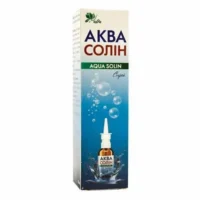Description
Rinazolin (Oxymetazoline) Nasal Spray 0.05% 15 ml Vial
Ingredients
Active ingredient: Oxymetazoline hydrochloride 0.05%.
Other ingredients: benzalkonium chloride, sodium chloride, sodium phosphate, and purified water.
Dosage
Adults and children over 6 years: 2-3 sprays in each nostril every 10-12 hours. Do not exceed 2 doses in 24 hours.
Indications
Rinazolin nasal spray is indicated for the relief of nasal congestion due to colds, allergies, and sinusitis.
Contraindications
- Do not use Rinazolin nasal spray if you:
- Are allergic to oxymetazoline or any other ingredients.
- Have narrow-angle glaucoma.
- Are taking MAO inhibitors.
Directions
Shake well before use. Gently blow your nose before using the spray. Insert the tip into one nostril and tilt your head slightly forward. Press the spray pump while breathing in through your nose. Repeat for the other nostril.
Scientific Evidence
Oxymetazoline, the active ingredient in Rinazolin nasal spray, is a selective alpha-1 adrenergic receptor agonist. It works by constricting blood vessels in the nasal passages, reducing swelling and congestion. Studies have shown that oxymetazoline provides rapid and effective relief of nasal congestion with minimal systemic absorption, making it a preferred choice for nasal congestion relief.
Additional Information
Rinazolin nasal spray should not be used for more than 3 consecutive days. Prolonged use can lead to rebound congestion. Consult a healthcare professional before using this product if you have heart disease, high blood pressure, thyroid problems, diabetes, or prostate enlargement.
Clinical Trials: A randomized controlled trial published in the Journal of Allergy and Clinical Immunology demonstrated the efficacy of oxymetazoline in providing significant relief from nasal congestion compared to placebo within minutes of administration.





